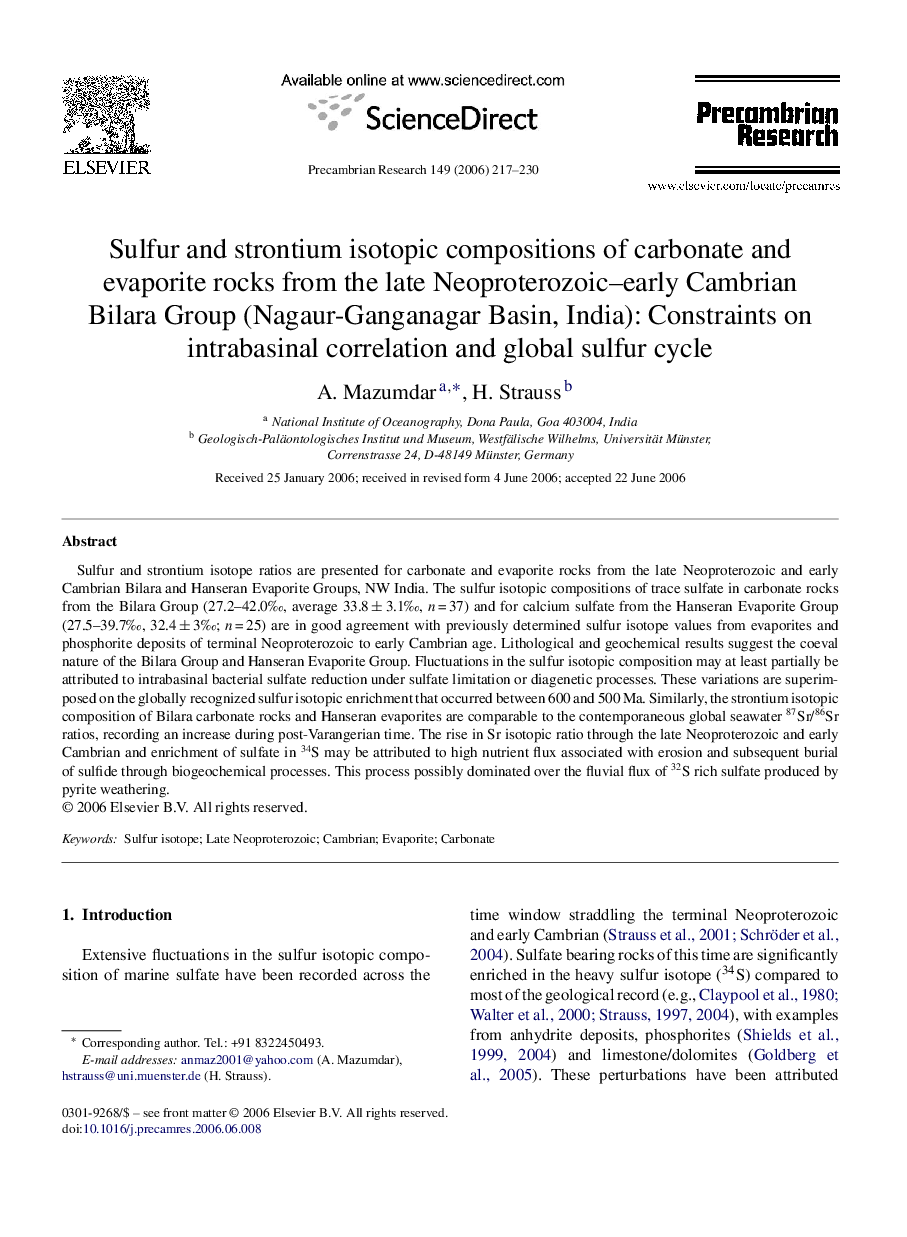| کد مقاله | کد نشریه | سال انتشار | مقاله انگلیسی | نسخه تمام متن |
|---|---|---|---|---|
| 4724662 | 1639730 | 2006 | 14 صفحه PDF | دانلود رایگان |

Sulfur and strontium isotope ratios are presented for carbonate and evaporite rocks from the late Neoproterozoic and early Cambrian Bilara and Hanseran Evaporite Groups, NW India. The sulfur isotopic compositions of trace sulfate in carbonate rocks from the Bilara Group (27.2–42.0‰, average 33.8 ± 3.1‰, n = 37) and for calcium sulfate from the Hanseran Evaporite Group (27.5–39.7‰, 32.4 ± 3‰; n = 25) are in good agreement with previously determined sulfur isotope values from evaporites and phosphorite deposits of terminal Neoproterozoic to early Cambrian age. Lithological and geochemical results suggest the coeval nature of the Bilara Group and Hanseran Evaporite Group. Fluctuations in the sulfur isotopic composition may at least partially be attributed to intrabasinal bacterial sulfate reduction under sulfate limitation or diagenetic processes. These variations are superimposed on the globally recognized sulfur isotopic enrichment that occurred between 600 and 500 Ma. Similarly, the strontium isotopic composition of Bilara carbonate rocks and Hanseran evaporites are comparable to the contemporaneous global seawater 87Sr/86Sr ratios, recording an increase during post-Varangerian time. The rise in Sr isotopic ratio through the late Neoproterozoic and early Cambrian and enrichment of sulfate in 34S may be attributed to high nutrient flux associated with erosion and subsequent burial of sulfide through biogeochemical processes. This process possibly dominated over the fluvial flux of 32S rich sulfate produced by pyrite weathering.
Journal: Precambrian Research - Volume 149, Issues 3–4, 30 September 2006, Pages 217–230